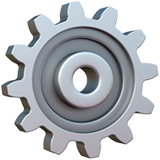Sales commissions, administrative costs, advertising and rent of office space are all period costs. These costs are not included as part of the cost of either purchased or manufactured goods, but are recorded as expenses on the income statement in the period they are incurred. Remember, when expenses incurred may what forms a good business team not be when cash changes hands. If advertising happens in June, you will receive an invoice, and record the expense in June, even if you have terms that allow you to actually pay the expense in July. The cash may actually be spent on an item that will be incurred later, like insurance. It is important to understand through the accrual method of accounting, that expenses and income should be recognized when incurred, not necessarily when they are paid or cash received.
Accurate pricing for your products
On the other hand, period costs include administrative, selling, offices, and similar expenses. Both product costs and period costs directly affect your balance sheet and income statement, but they are handled in different ways. Product costs are always considered variable costs, as they rise and fall according to production levels.
Accounting for Managers
Manufacturing overhead costs are manufacturing costs that must be incurred but that cannot or will not be traced directly to specific units produced. In addition to indirect materials and indirect labor, manufacturing overhead includes depreciation and maintenance on machines and factory utility costs. Period costs include any costs not related to the manufacture or acquisition of your product.
These are items not related to the production or acquisition process directly. Therefore, period costs consist of all items bond issue costs not included as product costs. These costs do not become a part of the capitalized cost of a specific product.
What are Period Costs?
The key difference between product cost and period cost is that product concurs when a company produces any products. Consequently, they are not apportioned to any product but charged as an expense in the income statement. An example of a product cost would be the cost of raw materials used in the manufacturing process. Product costs also include Depreciation on plant, expired insurance on plant, production supervisor salaries, manufacturing supplies used, and plant maintenance. Both of these costs are considered period costs because selling and administrative expenses are used up over the same period in which they originate. Most period costs are considered periodic fixed expenses, although in some instances, they can be semi-variable expenses.
Do you already work with a financial advisor?
Product costs are variable and fluctuate as the activity levels within a company increase or decrease. Regardless, all period costs, whether fixed or semi-variable, are considered expenses and will be reported on your income statement. The type of labor involved will determine whether it is accounted for as a period cost or a product cost. Direct labor that is tied to production can be considered a product cost. However, other labor, such as secretarial or janitorial staff, would instead be period costs.
In other words, they are expensed in the period incurred and appear on the income statement. The differences between product and period costs can be summarized in the following areas. In other words, period costs are related to the services consumed over the period in question.
The difference between product costs and period costs
- If the accounting period were instead a year, the period cost would encompass 12 months.
- So if you sell a widget for $20 that had $10 worth of raw materials, you would record the sale as a credit (increasing) to sales and a debit (increasing) either cash or accounts receivable.
- Managing your costs is doubly important if you own a manufacturing business, since you’ll need to manage both product and period costs.
- Product costs increase as the activity levels within a company grow.
- Someone on our team will connect you with a financial professional in our network holding the correct designation and expertise.
Conversion costs, in turn, include direct labour and factory overheads. Usually, companies capitalize product costs as a part of the inventory or stock balances. Examples of product costs include the cost of raw materials used, depreciation on plant, expired insurance on plant, production supervisor salaries, manufacturing supplies used, and plant maintenance. Direct labor costs include the labor costs of all employees actually working on materials to convert them into finished goods. As with direct material costs, direct labor costs of a product include only those labor costs distinctly traceable to, or readily identifiable with, the finished product. The wages paid to a construction worker, a pizza delivery driver, and an assembler in an electronics company are examples of direct labor.
Our writing and editorial staff are a team of experts holding advanced financial designations and have written for most major financial media publications. Our work has been directly cited by organizations including Entrepreneur, Business Insider, Investopedia, Forbes, CNBC, and many others. Our team of reviewers are established professionals with decades of experience in areas of personal finance and hold many advanced degrees and certifications.
We need to first revisit the concept of the matching principle from financial accounting. As mentioned above, product costs become a part of the balance sheet through finished goods. When companies sell those goods, these costs go to the income statement. Period costs are sometimes broken out into additional subcategories for selling activities and administrative activities. Administrative activities are the most pure form of period costs, since they must be incurred on an ongoing basis, irrespective of the sales level of a business.
For example, iron ore is a direct material to a steel company because the iron ore is clearly traceable to the finished product, steel. In turn, steel becomes a direct material to an automobile manufacturer. Product costs increase as the activity levels within a company grow. On the other hand, period costs do not relate to how many units a company produces. Period costs are costs that cannot be capitalized on a company’s balance sheet.
If you manufacture a product, these costs would include direct materials and labor along with manufacturing overhead. Most of the components of a manufactured item will be raw materials that, when received, are recorded as inventory on the balance sheet. Only when they are used to produce and sell goods are they moved to cost of goods sold, which is located on the income statement.
When the raw materials are brought in they will sit on the balance sheet. When the product is manufactured and then sold a corresponding amount from the inventory account will be moved to the income statement. So if you sell a widget for $20 that had $10 worth of raw materials, you would record the sale as a credit (increasing) to sales and a debit (increasing) either cash or accounts receivable.
 موبایل
موبایل موبایل براساس برند
موبایل براساس برند موبایل براساس عملکرد
موبایل براساس عملکرد موبایل براساس سخت افزار
موبایل براساس سخت افزار موبایل براساس دوربین
موبایل براساس دوربین